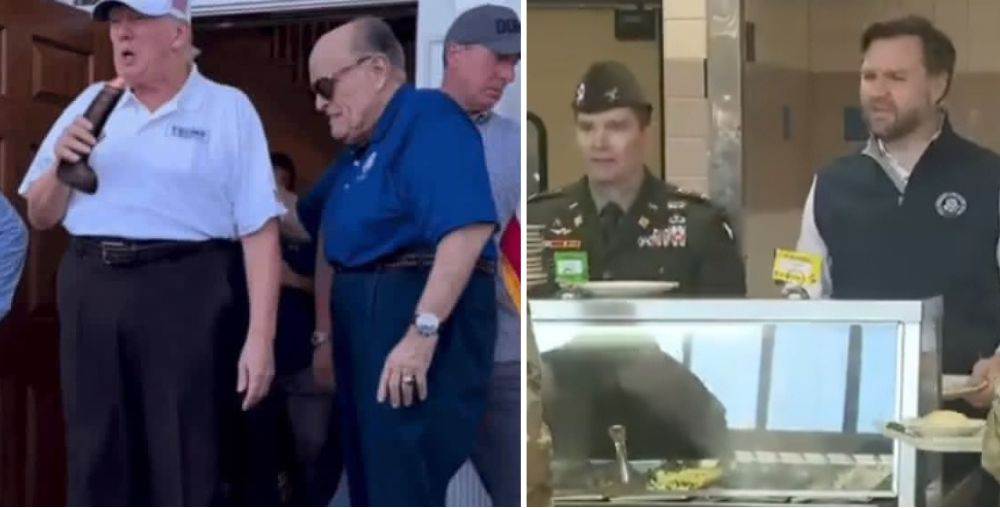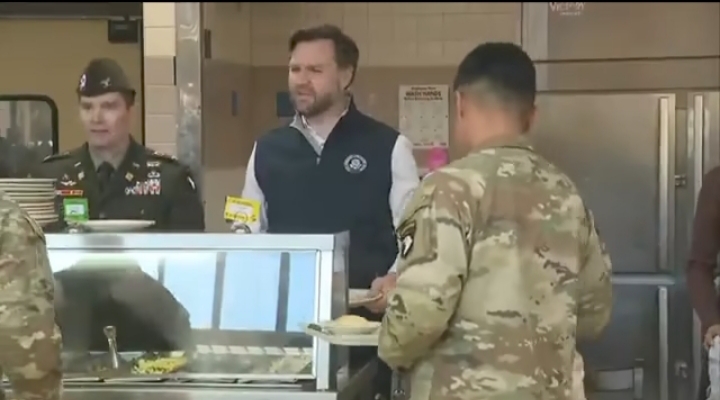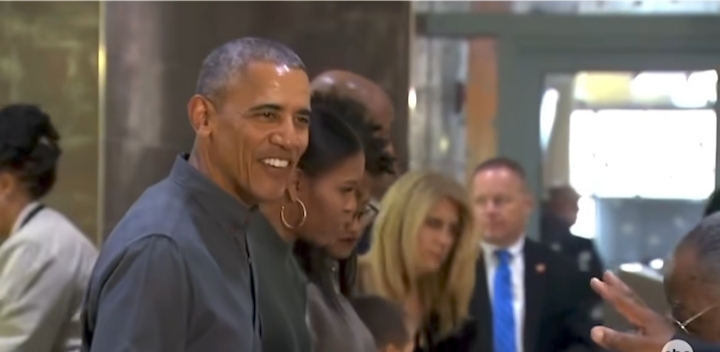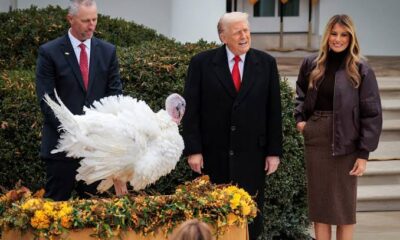NEWS
President Trump Unveils a Cringe New Thanksgiving Tradition in Costume as Vice President Vance Serves Troops at Fort Campbell With His Daughter, and Former President Obama and His Family Spend the Holiday Serving Veterans — A Supreme Court Ruling is Hanging Over Trump’s Controversial Celebration

President Trump has once again made headlines this Thanksgiving, unveiling what many are calling a cringe-worthy new tradition. Dressed in an unusual costume that immediately drew attention, he stepped into the public eye in a way that left viewers questioning whether it was meant to honor the holiday or simply provoke reaction. Every movement, every gesture seemed amplified by the cameras, as if the spectacle itself was the main event. It was a display that captured the nation’s gaze, but also drew sharp criticism and whispers of disbelief across social media and newsrooms alike.
Meanwhile, in a far more grounded and quietly powerful scene, Vice President Vance was spending the day with his daughter at Fort Campbell, serving troops and sharing moments that felt real, human, and deeply meaningful. Soldiers lined up to receive meals, but it was not just about food—it was about acknowledgment, about being seen and appreciated in a way that transcends political spectacle. Vance moved among them with ease, engaging with smiles, handshakes, and the kind of personal attention that made the holiday feel genuine, leaving many wondering why such moments are so rare in the political world.
At the same time, former President Obama and his family were also quietly making their mark. At the Armed Forces Retirement Home, they served meals to veterans, sharing stories, laughter, and the warmth of the season with men and women whose sacrifices are often spoken of but seldom truly honored. There was a stark contrast between the warmth of these interactions and the performative energy dominating other corners of the holiday. The Obamas’ presence was subtle, yet it carried a weight that reminded the country what Thanksgiving can and should be: a time to give, to recognize, to connect.
Hovering over all of this, however, is a Supreme Court ruling that could leave a lasting mark on how Trump’s new holiday tradition is remembered. Legal experts and political commentators alike are debating the implications, speculating on how this decision might frame public perception, influence narratives, and shape the way history records the day. Even as the cameras focused on costumes, on smiles, on the visible pageantry, the undercurrent of law and consequence added a layer of tension few could ignore. Every action, every photo, every headline now carried with it a sense of suspense, as if the day itself were a stage for both performance and judgment.
The contrast between spectacle and service, between provocation and quiet dignity, was impossible to miss. As the sun set and families across the nation reflected on their own gatherings, the stories of this Thanksgiving spread quickly, each carrying questions, comparisons, and judgments. Who truly honored the holiday? Who captured the spirit of gratitude, service, and reflection? And in the background, the Supreme Court ruling waited, a silent arbiter that could redefine how this day is remembered for years to come.
For viewers, readers, and citizens alike, it was a Thanksgiving unlike any other—a day where costumes clashed with duty, appearances contrasted with action, and the tension between spectacle and sincerity reached a peak. Every moment, every image, every choice resonated far beyond the holiday itself, leaving the nation to wonder which version of Thanksgiving would endure, and what the final verdict would reveal.






















